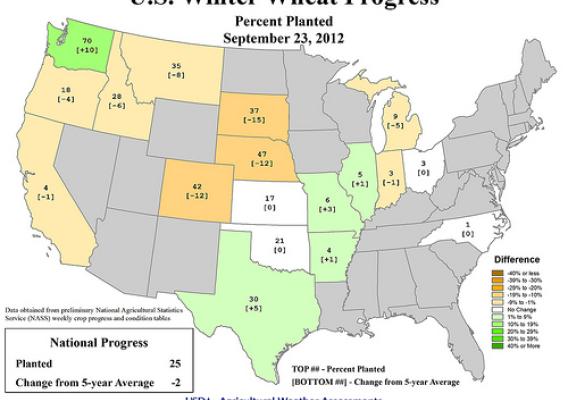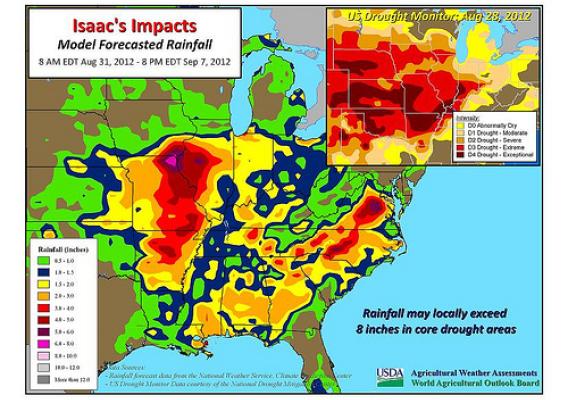With the summer crop season winding down at a rapid pace, the agricultural weather focus is turning to winter wheat. In the hard red winter wheat belt of the Great Plains, wheat planting got off to a slow start due to extremely dry conditions. By September 9 , planting was behind the five-year average pace in all seven major production states on the Plains, according to USDA’s National Agricultural Statistics Service. Planting progress was more than five percentage points behind the average in Colorado (0% planted versus the average of 13%), Nebraska (8 vs. 16%), and South Dakota (8 vs. 14%). Ongoing drought across the nation’s mid-section is also reflected by current rangeland and pasture conditions. On September 9, nearly all (97%) of the rangeland and pastures were rated very poor to poor in Nebraska, along with 92% in Missouri, 89% in Kansas, 87% in Colorado, and 86% in New Mexico. Farther east, however, pastures have improved with recent rainfall. Most notably, pastures in Illinois were rated 59% very poor to poor on September 9, a significant improvement from 72% a week ago and 90% on August 26.






